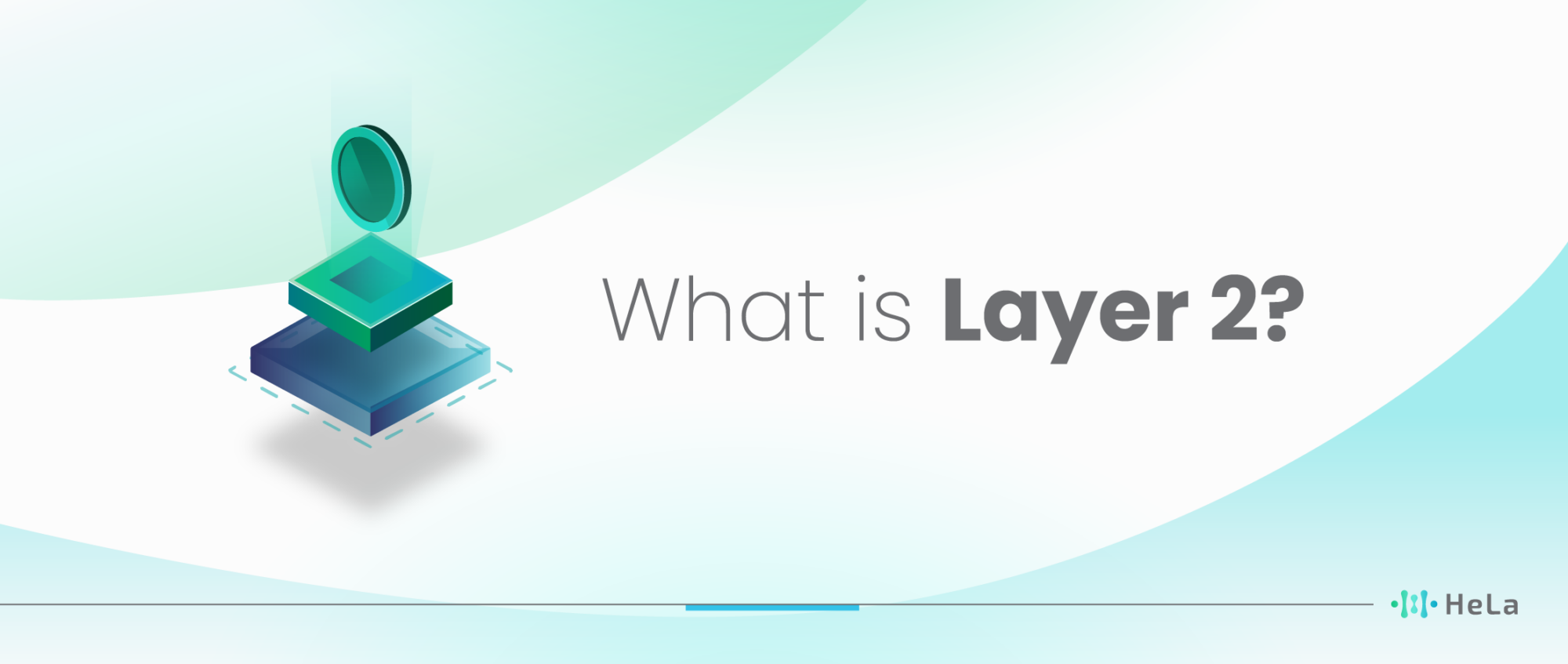What is Layer 2 (L2)?
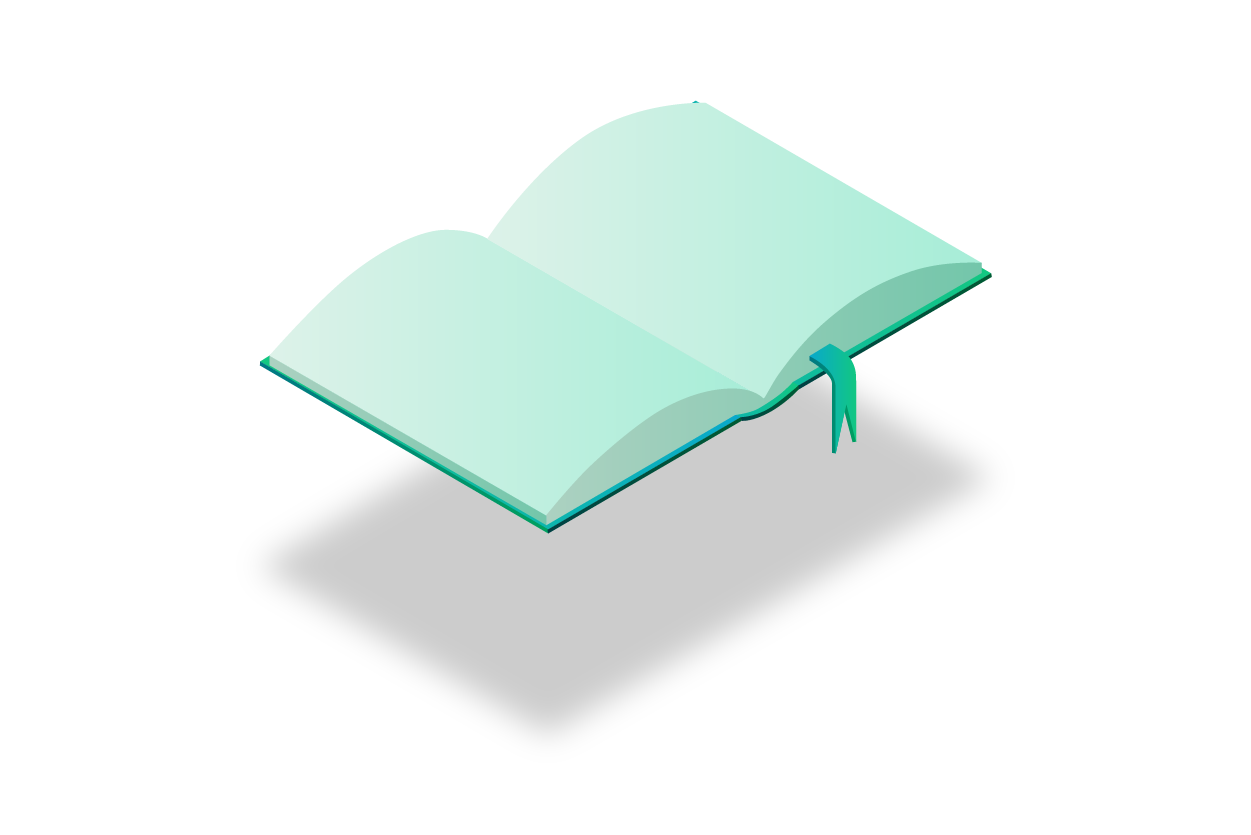
Layer 2 (L2) in blockchain is like the secret sauce that takes blockchain technology from good to great, and it’s far more exciting than it might seem at first glance. Think of Layer 1 blockchains—like Bitcoin and Ethereum—as the solid foundation of a skyscraper. They are secure and decentralized, but they’re also limited in how much they can handle. Imagine trying to fit all the world’s financial transactions, gaming data, NFTs, and decentralized apps into that one foundation—it’s like trying to cram the entire internet onto a single hard drive.
That’s where Layer 2 comes in, like the fast-moving elevator system that makes the skyscraper livable. While Layer 1 handles the security and structure, Layer 2 offloads the heavy lifting—processing thousands of transactions quickly and cheaply without cluttering up the main blockchain. Layer 2 solutions don’t just make blockchain faster and more efficient—they make it scalable in a way that could revolutionize entire industries. Picture sending money across the globe in seconds with almost no fees or playing blockchain-based games that don’t lag or cost a fortune in gas fees.
Technologies like rollups, state channels, and sidechains let Layer 2 soar above the bottlenecks of Layer 1, making the blockchain experience smoother for everyone. But here’s the twist—despite all this action happening off-chain, Layer 2 still relies on Layer 1’s robust security. So, while it speeds things up and lowers costs, it doesn’t compromise on what makes blockchain technology trustworthy in the first place. It’s not just an upgrade—it’s the layer that could finally make blockchain ready for mainstream, global adoption, from finance to gaming to every corner of the decentralized web.
How Do Layer-2 Solutions Work? The Key Mechanisms
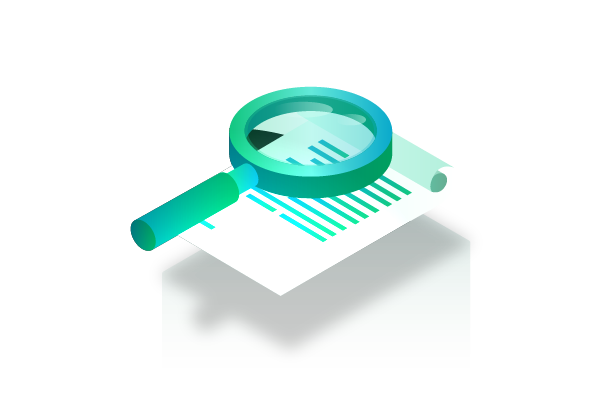
Layer-2 solutions rely on several distinct technologies to function effectively. Some of the most prominent methods include state channels, sidechains, and rollups. Each approach has its own unique way of scaling transactions, but all share the same goal of offloading computational work from the main blockchain.
1. State Channels
State channels are one of the earliest Layer-2 scaling solutions, offering a way for users to conduct multiple transactions off-chain and only settle the final result on-chain. This is similar to how a bar tab works—you make multiple purchases, but instead of paying for each drink individually, you settle the total bill at the end of the night.
How it works: Two or more participants lock up a portion of their funds on the Layer 1 blockchain in a multi-signature wallet. This wallet is only accessible with signatures from both parties. Once the funds are locked, participants can transact with each other off-chain by exchanging signed messages, which represent the new balances between them. Once they decide to close the channel, the final state (or result) is broadcast to the Layer 1 blockchain, which updates the main ledger.
Benefits: State channels significantly reduce the number of on-chain transactions, making it possible to execute a large number of operations instantly and with minimal fees. This approach is ideal for applications that require frequent, small transactions, such as micro-payments, gaming, and decentralized exchanges.
2. Sidechains
Sidechains are independent blockchains that run parallel to the Layer 1 blockchain. They are designed to work with the main chain through a two-way peg system, allowing assets to move back and forth between the two chains. Each sidechain operates with its own consensus mechanism, which may be more efficient and scalable than Layer 1’s consensus.
How it works: Users transfer assets from the Layer 1 blockchain (the main chain) to the sidechain by locking them on the main chain and minting equivalent tokens on the sidechain. Once on the sidechain, these tokens can be used in transactions that do not burden the Layer 1 network. When users wish to return to the main chain, they lock the tokens on the sidechain and release the equivalent assets on the main chain.
Benefits: Sidechains offer more flexibility because they can experiment with different consensus models and functionalities that may not be feasible on Layer 1. For example, sidechains can support higher transaction throughput, faster block times, or different token standards. Additionally, sidechains are beneficial for applications that require specific functionalities, such as gaming or decentralized finance, where scalability is essential.
Also Read: 7 New Promising Layer 1 Blockchain Projects in 2024
3. Rollups
Rollups are currently one of the most popular and promising Layer-2 solutions, particularly for scaling Ethereum. They work by bundling or “rolling up” a batch of transactions and processing them off-chain, while only posting a summary or proof of the transactions back to Layer 1. This dramatically reduces the amount of data that needs to be stored and processed on the main chain, without sacrificing the security benefits of Layer 1.
There are two types of rollups:
- Optimistic Rollups: These assume that the off-chain transaction data is correct and only post the transaction data to the main chain. In the case of fraud or an incorrect transaction, a challenge mechanism allows the incorrect transaction to be disputed and corrected on-chain. This makes optimistic rollups very efficient and cost-effective.
- Zero-Knowledge (ZK) Rollups: These create cryptographic proofs (known as ZK-SNARKs) to validate a batch of transactions off-chain. These proofs are then submitted to the Layer 1 blockchain, where they are verified. ZK rollups are more secure and faster than optimistic rollups, as they eliminate the need for a dispute period.
Benefits: Rollups significantly improve transaction throughput, reduce gas fees, and maintain a high level of security by anchoring themselves to the Layer 1 blockchain. ZK rollups, in particular, are highly efficient and can process hundreds of transactions in a single batch, making them ideal for high-volume applications like DeFi or NFT platforms.
Why Layer-2 Solutions Are Crucial for Blockchain Growth?
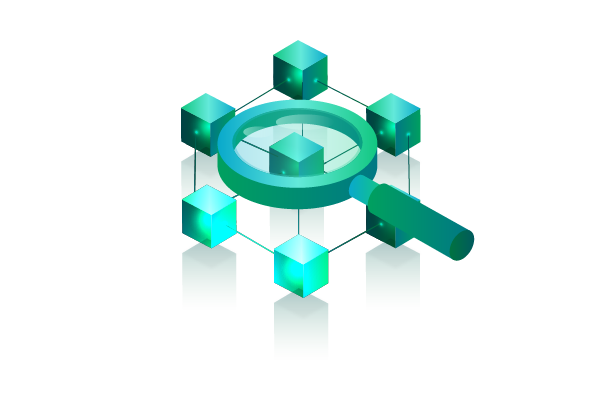
As the digital frontier expands, blockchain technology is often celebrated as a transformative force capable of redefining how we conduct transactions, manage data, and engage with decentralized applications (dApps). Yet, this promising technology faces significant hurdles that could limit its potential. Traditional Layer 1 blockchains, like Bitcoin and Ethereum, grapple with scalability issues, high transaction fees, and slow processing times. Enter Layer-2 solutions, a groundbreaking approach designed to enhance the performance and usability of these blockchains. But what exactly makes Layer-2 solutions so vital to the future of blockchain? Let’s explore how these innovations not only address the challenges faced by Layer 1 networks but also unlock new opportunities for growth, adoption, and creativity within the blockchain ecosystem.
1. Unlocking Scalability: The Gateway to Mass Adoption
Scalability is a fundamental issue for blockchain networks, as the ability to handle high transaction volumes is critical for widespread adoption. Layer-2 solutions effectively address these limitations, enabling blockchains to support more users and applications.
- Current Limitations: Traditional Layer 1 blockchains can struggle to handle high transaction volumes. For example, Bitcoin can manage only about 7 transactions per second (TPS), while Ethereum can handle around 15 TPS. This creates bottlenecks, particularly during peak times, leading to delays and frustrated users. The result? Many potential users abandon their transactions, missing out on the benefits that blockchain offers.
- Layer-2 Innovations: Layer-2 solutions such as Optimistic Rollups and ZK-Rollups enable transactions to be processed off-chain, effectively increasing throughput. These solutions can achieve transaction speeds of thousands of TPS, allowing networks to scale effectively. For example, ZK-Rollups can potentially reach up to 2,000 TPS, revolutionizing the user experience. With such improvements, Layer 2 essentially transforms blockchain technology into a viable alternative for high-demand applications, such as e-commerce or gaming.
- Impact on User Adoption: By enhancing scalability, Layer-2 solutions open the door for mainstream adoption. They empower more users to engage with blockchain applications seamlessly, breaking down barriers that previously deterred participation. This newfound scalability can lead to increased transaction volumes and a vibrant ecosystem where developers and users alike can thrive.
2. Reducing Costs: Making Blockchain Accessible to All
The cost of transactions on Layer 1 blockchains can be prohibitive for many users, especially during times of high demand. Layer-2 solutions address this issue by significantly lowering transaction fees, making blockchain technology more accessible.
- High Transaction Fees: On Layer 1, transaction fees can spike dramatically during times of high network congestion. For instance, Ethereum gas fees can soar to hundreds of dollars, making it impractical for smaller transactions and everyday users. This economic barrier effectively excludes a significant portion of the population from participating in the blockchain economy.
- Cost-Effective Solutions: Layer-2 solutions significantly lower transaction costs by processing transactions off-chain and batching them together before submitting them to the Layer 1 blockchain. This aggregation can reduce fees to just a few cents per transaction. This cost reduction makes blockchain technology not just a tool for the wealthy but accessible to everyone, including small businesses and everyday users who may want to make microtransactions.
- Encouraging Microtransactions: The reduction in costs allows for microtransactions to become viable, enabling a range of applications from gaming to tipping artists. This democratization of access encourages broader participation in the blockchain ecosystem, allowing creators and consumers to interact in innovative ways that were previously cost-prohibitive.
3. Enhancing User Experience: A Seamless Journey into Blockchain
User experience (UX) is critical for the adoption and success of blockchain technology. Layer-2 solutions enhance UX by ensuring faster transaction confirmations and smoother interactions with decentralized applications.
- User Frustrations with Delays: In traditional blockchain interactions, users often face slow transaction confirmations. For instance, a user trying to purchase an NFT on Ethereum might experience delays during peak periods, leading to a frustrating experience. Such frustrations can deter new users from exploring blockchain applications, stunting growth.
- Layer-2 Efficiency: Layer-2 solutions streamline transaction processing, enabling near-instant confirmations. This improvement allows users to interact with dApps effortlessly, whether they are trading assets, engaging in games, or executing smart contracts. A smoother user journey not only enhances satisfaction but also encourages frequent interactions with blockchain applications.
- Importance of UX: A positive user experience is critical for user retention and engagement. By reducing waiting times and improving the overall experience, Layer-2 solutions encourage users to adopt and frequently utilize blockchain applications. This focus on user experience is essential for fostering a loyal user base that is likely to spread the word about blockchain’s benefits.
4. Fueling the Growth of DeFi and NFTs: The New Frontier of Digital Assets
Decentralized Finance (DeFi) and non-fungible tokens (NFTs) are rapidly emerging sectors within the blockchain ecosystem. Layer-2 solutions are crucial for supporting these sectors by alleviating issues related to high costs and slow transaction speeds.
- Challenges in DeFi and NFT Spaces: The rapid rise of decentralized finance (DeFi) and non-fungible tokens (NFTs) has put immense pressure on Layer 1 blockchains. High fees and slow transaction times can hinder participation in these burgeoning sectors. As a result, potential users may feel overwhelmed by the complexity and costs associated with engaging in these markets.
- Layer-2’s Role: Layer-2 solutions enable DeFi platforms and NFT marketplaces to operate more efficiently. For example, DEXs like Uniswap can leverage Layer-2 solutions to facilitate faster trades and lower costs, enhancing the user experience. This efficiency not only attracts more users but also allows developers to innovate without worrying about prohibitive costs.
- Wider Participation: By improving the feasibility of transactions, Layer-2 solutions allow more users to participate in the DeFi and NFT markets. This fosters innovation and diversification in these sectors, leading to a richer ecosystem where creators, investors, and consumers can interact dynamically.
5. Security Reinvented: Trust in Every Transaction
Security is a paramount concern for any technology dealing with financial transactions. Layer-2 solutions enhance the security of blockchain transactions through advanced mechanisms, assuring users of their data’s integrity.
- Security Concerns: Security is paramount in blockchain technology, where users rely on the integrity of the network. Layer 1 blockchains are often seen as more secure due to their decentralization and immutability. However, the introduction of Layer-2 solutions raises questions about their security protocols and practices.
- Layer-2 Security Mechanisms: Layer-2 solutions enhance security through advanced cryptographic techniques, such as zero-knowledge proofs (ZKPs). ZKPs allow for the validation of transactions without revealing sensitive information, ensuring privacy while maintaining security. These innovations provide users with peace of mind, knowing their data and assets are protected.
- Trust and Integrity: Layer-2 solutions are anchored to Layer 1, meaning that the security of the main blockchain underpins the transactions processed off-chain. This dual-layer security model reassures users, fostering trust in blockchain applications. The enhanced security provided by Layer-2 solutions is vital for building confidence among users, encouraging them to participate actively in the blockchain ecosystem.
Also Read: What is Layer 1 (L1) in Blockchain?
6. Catalyzing Innovation: A Playground for Developers
The success of any technology lies in its ability to innovate. Layer-2 solutions provide developers with the freedom and resources to create new applications without the constraints imposed by Layer 1.
- Limitations of Layer 1: The constraints of transaction speed and costs on Layer 1 can stifle developer creativity and innovation. Many developers are deterred from building new applications due to the technical limitations of existing infrastructure. As a result, innovative ideas may never come to fruition.
- Opportunities with Layer-2: Layer-2 solutions create an environment where developers can experiment freely. With fewer limitations on transaction costs and speeds, developers are empowered to build complex applications that were previously infeasible. This freedom not only sparks creativity but also leads to the development of solutions that can address real-world problems.
- Impact on Ecosystem: This freedom to innovate can lead to the creation of diverse applications across various sectors—finance, gaming, social media, and more. By fostering a culture of creativity, Layer-2 solutions help evolve the blockchain ecosystem. The emergence of novel applications encourages more users to engage with blockchain, propelling further growth and adoption.
7. Interoperability: Bridging Blockchain Networks
As blockchain networks continue to proliferate, the need for seamless interoperability becomes more critical. Layer-2 solutions can bridge various networks, enhancing the overall functionality of the blockchain landscape.
- The Need for Interoperability: As multiple blockchains emerge, the ability to interact seamlessly across networks becomes essential. Users want the freedom to move assets and information without friction. Interoperability is key to realizing the full potential of blockchain technology.
- Layer-2 as a Connector: Layer-2 solutions can facilitate cross-chain communication and transactions, enabling users to interact with different blockchains effortlessly. This connectivity enhances the overall utility of blockchain technology, allowing users to engage in a broader array of decentralized applications.
- Examples of Interoperable Projects: Projects like Polkadot and Cosmos focus on enabling interoperability between different blockchains. Layer-2 solutions can work within these ecosystems, creating a more cohesive blockchain experience. The ability to transfer assets and data across various networks not only improves user experience but also fosters collaboration among different blockchain communities.
The Role of Proof in Layer 2 Security
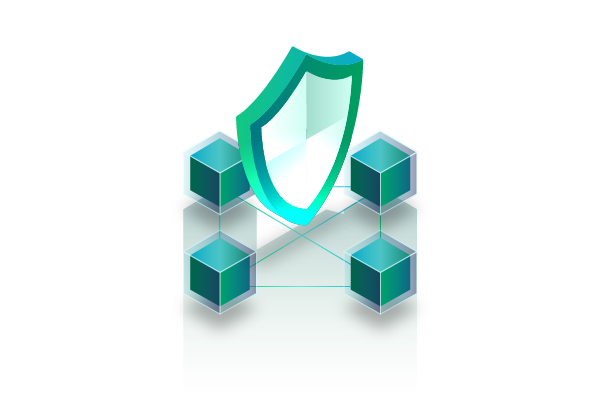
Proof mechanisms are the backbone of Layer 2 security, acting as a validation layer that ensures transactions are legitimate and that the state of the network remains consistent. Here are several key reasons why proof is crucial:
1. Verifying Transactions
In Layer 2 solutions, multiple transactions are processed off-chain, which could lead to discrepancies or fraudulent activities if left unchecked. Proof mechanisms, such as zero-knowledge proofs (ZKPs) and optimistic rollups, validate the authenticity of these transactions before they are finalized on Layer 1.
Zero-Knowledge Proofs: ZKPs allow one party to prove to another that a statement is true without revealing any specific information about the statement itself. This ensures that transactions are legitimate while maintaining user privacy.
Optimistic Rollups: These assume that transactions are valid by default but allow for a challenge period during which users can contest incorrect transactions. The proof of valid transactions is essential during this period to uphold the integrity of the network.
2. Preventing Fraud and Double Spending
Fraudulent activities, such as double spending, pose a significant risk to any financial network. In a Layer 2 context, where multiple transactions occur off-chain, ensuring that a user cannot spend the same asset multiple times becomes crucial. Proof mechanisms play a vital role in preventing such scenarios:
Challenge Mechanisms: In optimistic rollups, if a participant attempts to submit an invalid transaction, others can challenge it. Proof is required to substantiate the challenge, ensuring that any fraudulent attempt can be detected and rectified.
State Validation: Before finalizing any transaction on the main blockchain, Layer 2 solutions utilize proof mechanisms to validate the current state of the ledger. This helps confirm that the transactions being submitted are consistent with the overall state of the network.
3. Maintaining Decentralization and Trust
Layer 2 solutions often function in decentralized environments, where users may not know or trust each other. Proof mechanisms foster trust among participants by providing verifiable evidence of transaction validity. This is particularly important for user confidence in decentralized finance (DeFi) applications, where substantial amounts of assets are at stake.
Transparency: By utilizing proof mechanisms, Layer 2 solutions can offer transparency in how transactions are processed and validated. This transparency is essential for fostering trust in a decentralized network where users are hesitant to rely solely on a central authority.
User Empowerment: Proof mechanisms empower users by allowing them to verify transactions independently. This is especially significant in a landscape where trustless interactions are a core principle of blockchain technology.
4. Enhancing Network Security
As Layer 2 solutions scale and handle more transactions, ensuring robust security becomes paramount. Proof mechanisms enhance network security by providing layers of validation that protect against various attack vectors.
Sybil Attacks: In a Sybil attack, a malicious actor creates multiple identities to gain control over the network. Proof mechanisms help counteract this risk by ensuring that transactions are validated through legitimate channels.
Incentive Structures: Many Layer 2 solutions incorporate incentive mechanisms tied to proof of transaction validity. Users who validate transactions and maintain network security are often rewarded, promoting honest participation in the network.
Top List of Layer 2 (L2) in Blockchain Examples (Update 2024)
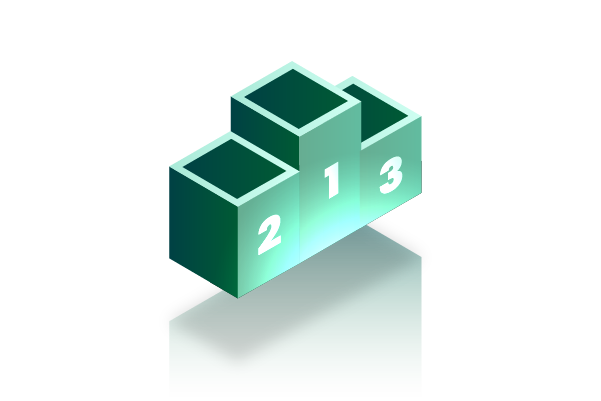
As the demand for blockchain technology continues to grow, the need for scalable and efficient solutions has led to the emergence of Layer 2 (L2) protocols. These projects aim to enhance the scalability, speed, and overall performance of existing blockchains, particularly Ethereum. By processing transactions off-chain and then settling them on-chain, Layer 2 solutions can significantly reduce congestion and lower transaction fees. Here, we explore the top 10 Layer 2 projects that are making waves in the blockchain ecosystem.
1. Polygon (MATIC)
Polygon is a multi-chain scaling solution designed to improve the scalability of Ethereum and other blockchains. Originally known as Matic Network, it rebranded to Polygon in 2021 to reflect its broader vision of becoming a framework for building interconnected blockchain networks.
Technology
- Architecture: Polygon uses various Layer 2 solutions, including Plasma Chains, zk-Rollups, and optimistic rollups. Its modular architecture allows developers to choose the most suitable solution for their dApps.
- Interoperability: Polygon enables different blockchains to communicate seamlessly, promoting a multi-chain ecosystem.
Use Cases
- DeFi: Many decentralized finance applications are built on Polygon due to its low fees and high throughput.
- Gaming and NFTs: Polygon has partnered with numerous gaming projects and NFT marketplaces to provide fast transactions and scalability.
Notable Developments
- Adoption: Polygon has seen widespread adoption, with thousands of dApps deployed on its network, including Aave and SushiSwap.
- Ecosystem Growth: The Polygon ecosystem has expanded to include partnerships with major brands and platforms, like Disney and Reddit.
2. Optimism (OP)
Optimism is an Ethereum Layer 2 scaling solution that utilizes optimistic rollups to increase transaction throughput while maintaining Ethereum’s security.
Technology
- Optimistic Rollups: Transactions are processed off-chain, and the results are assumed to be valid. If there’s a dispute, the transaction can be challenged on the main chain.
- EVM Compatibility: Developers can easily port their existing Ethereum dApps to Optimism without significant modifications.
Use Cases
- DeFi: Optimism has become a popular platform for DeFi projects, allowing users to trade and lend assets with significantly lower fees.
- Gaming: The gaming industry is leveraging Optimism to create fast and low-cost gaming experiences.
Notable Developments
- Launch: The mainnet launched in June 2021, and it has since grown rapidly, hosting projects like Synthetix and Uniswap.
- Token Launch: Optimism’s native token, OP, was launched in 2022 to facilitate governance and incentivize community participation.
3. Arbitrum (ARB)
Arbitrum is a Layer 2 scaling solution that uses optimistic rollups to enhance the scalability of Ethereum, aiming to make transactions cheaper and faster.
Technology
- Optimistic Rollups: Similar to Optimism, Arbitrum assumes transactions are valid and allows for dispute resolution if necessary.
- Arbitrum Virtual Machine (AVM): The AVM supports EVM, enabling developers to deploy existing Ethereum contracts on Arbitrum without modification.
Use Cases
- DeFi: Arbitrum is home to many DeFi applications, providing users with low fees and fast transaction confirmations.
- Cross-Chain Applications: Its infrastructure allows for building applications that can interact with multiple blockchains.
Notable Developments
- Growth: Arbitrum has quickly gained popularity, with a significant portion of Ethereum’s Layer 2 TVL (Total Value Locked) residing on its network.
- Arbitrum DAO: In 2022, Arbitrum launched its decentralized autonomous organization to govern the protocol.
4. Immutable X (IMX)
Immutable X is a Layer 2 scaling solution focused on non-fungible tokens (NFTs), providing a platform for minting and trading NFTs without gas fees.
Technology
- zk-Rollups: Immutable X uses zero-knowledge proofs to bundle multiple transactions into a single batch, enhancing scalability while maintaining security.
- Instant Trade Confirmation: Users can trade NFTs instantly with no gas fees, improving the overall experience.
Use Cases
- NFT Marketplaces: Immutable X has integrated with popular NFT marketplaces, enabling seamless trading of digital assets.
- Gaming: The platform supports blockchain games, allowing players to buy, sell, and trade in-game assets without incurring high fees.
Notable Developments
- Partnerships: Immutable X has partnered with major gaming companies, such as GameStop and Ubisoft, to enhance their NFT offerings.
- Launch of Immutable Passport: This feature simplifies the onboarding process for users and helps manage digital identities.
Also Read: Top 15 Layer 2 (L2) Crypto List to Consider in 2024
5. zkSync
zkSync is a Layer 2 scaling solution utilizing zero-knowledge proofs to enhance Ethereum’s scalability while ensuring security and privacy.
Technology
- Zero-Knowledge Rollups: zkSync processes transactions off-chain and submits a cryptographic proof to the Ethereum mainnet, allowing for increased throughput and lower fees.
- Privacy Features: zkSync supports private transactions, ensuring users can keep their transaction details confidential.
Use Cases
- DeFi and Payments: zkSync is suitable for various decentralized applications, including payment solutions and DeFi platforms.
- NFTs: The platform supports the minting and trading of NFTs with low fees and fast confirmations.
Notable Developments
- Mainnet Launch: zkSync launched its mainnet in June 2022, attracting numerous projects to its platform.
- Partnerships: The project has secured partnerships with various wallets and dApps, further expanding its ecosystem.
6. Boba Network
Boba Network is a Layer 2 scaling solution that combines optimistic rollups with hybrid compute capabilities, enhancing Ethereum’s performance.
Technology
- Hybrid Compute: Boba allows developers to run complex off-chain computations while maintaining security through optimistic rollups.
- Fast Transactions: It enables quick transaction confirmations, significantly reducing fees.
Use Cases
- Gaming and DeFi: Boba is ideal for building scalable applications in the gaming and DeFi sectors, where high transaction volumes are common.
- Decentralized Applications: The platform supports a wide range of dApps requiring high performance and low costs.
Notable Developments
- Launch: Boba Network’s mainnet launched in 2021, and it has attracted several high-profile projects.
- Boba Token (BOBA): The native token was introduced to facilitate governance and incentivize network participation.
7. Cartesi (CTSI)
Cartesi is a Layer 2 solution that integrates blockchain technology with traditional computing environments, allowing developers to build complex applications.
Technology
- Off-Chain Computation: Cartesi allows developers to run computations off-chain using standard programming languages, significantly reducing on-chain resource usage.
- Linux Integration: Developers can leverage familiar Linux tools and libraries, making blockchain development more accessible.
Use Cases
- Gaming: Cartesi is particularly suited for developing complex gaming applications that require extensive computations.
- IoT and Data-Intensive Applications: The platform can support various use cases in IoT and data processing due to its flexible architecture.
Notable Developments
- Partnerships: Cartesi has formed partnerships with various gaming studios and blockchain projects, enhancing its visibility and adoption.
- Development Community: The project actively engages with developers to foster a strong community around its platform.
8. Loopring (LRC)
Loopring is a Layer 2 solution designed for decentralized exchanges (DEXs) and payment protocols, focused on improving trading efficiency and security.
Technology
- zk-Rollups: Loopring utilizes zero-knowledge proofs to batch multiple transactions, increasing throughput while maintaining Ethereum’s security.
- Order Book Model: Unlike many DEXs that use automated market maker (AMM) models, Loopring employs a centralized order book for efficient trading.
Use Cases
- Decentralized Trading: Loopring enables users to trade assets with minimal fees and fast confirmations, making it an attractive option for traders.
- Payment Solutions: The platform also supports payment applications, allowing for efficient and secure transactions.
Notable Developments
- Loopring Exchange: The Loopring DEX launched in 2021, offering users a seamless trading experience.
- NFT Support: The platform has expanded its capabilities to include NFT minting and trading.
9. SKALE Network (SKL)
SKALE Network is a Layer 2 scaling solution that enables developers to create elastic sidechains tailored to their specific needs, enhancing Ethereum’s scalability.
Technology
- Elastic Sidechains: SKALE allows developers to deploy customizable sidechains that can scale dynamically based on application demand.
- EVM Compatibility: The platform supports Ethereum-compatible smart contracts, simplifying the development process.
Use Cases
- Gaming and Media: SKALE is particularly well-suited for applications in gaming and media that require high throughput and low latency.
- DeFi: The platform can also support DeFi applications, enabling efficient transactions and interactions.
Notable Developments
- Partnerships: SKALE has formed partnerships with various projects to enhance its ecosystem, including the integration of gaming and NFT platforms.
- Token Launch: The SKL token was launched to facilitate governance and incentivize network usage.
10. Hermez Network
Hermez Network is a Layer 2 solution focused on reducing transaction fees through zk-Rollups while maintaining Ethereum’s security.
Technology
- zk-Rollups: Hermez processes transactions off-chain, submitting a proof to the Ethereum mainnet, which allows for higher throughput and lower costs
- Fee Aggregation: Hermez utilizes a unique fee aggregation model, where users can pool their transactions to minimize costs, making it an economical choice for high-volume transactions.
Use Cases
- Payments and Remittances: Hermez is particularly well-suited for payment applications and remittance services, where minimizing transaction costs is critical.
- Decentralized Applications: The platform supports a wide range of dApps, offering low fees and fast transaction speeds.
Notable Developments
- Mainnet Launch: The Hermez mainnet went live in 2021, quickly gaining traction among users looking for low-cost transaction solutions.
- Merger with Polygon: In 2022, Hermez Network merged with Polygon to expand its capabilities and leverage Polygon’s broader ecosystem, further solidifying its position in the Layer 2 space.
Popular Layer 2 Solutions and Their Significance

Layer 2 solutions have gained significant attention in the blockchain and cryptocurrency space due to their potential to address scalability and cost issues that often plague the main blockchain networks like Ethereum. Here, we’ll delve deeper into some popular Layer 2 solutions and their significance.
State Channels
State channels are crucial for achieving scalability and cost-efficiency. They allow users to conduct numerous transactions off-chain, without the need for individual transactions to be confirmed on the main blockchain. This reduces congestion and fees on the main chain, making it suitable for applications with frequent interactions among a fixed group, such as gaming or micropayments. State channels also offer near-instant finality, making them ideal for real-time applications.
Plasma
Plasma is a framework designed to create “child” blockchains that branch from the main chain, often referred to as the “parent chain.” The main chain can assign a large amount of transactional work to the child chains thanks to this architecture. It consequently increases scalability by lowering the transactional load on the parent chain. Although there are many different ways to implement plasma, the fundamental concept is to build a hierarchy of blockchains, with each child chain in charge of a particular set of smart contracts or transactions. This is especially useful in scenarios where large volumes of data need to be processed or where different applications want to maintain their own chains, like decentralized exchanges.
Rollups
Layer 2 solutions called rollups combine several transactions into a single entity that is submitted to the main chain. The amount of data that must be stored on the main chain is significantly decreased with this aggregated approach, increasing its efficiency and scalability. ZK-Rollups and Optimistic Rollups are the two primary varieties of rollups. Optimistic Rollups provide data off-chain and only revert to the main chain when there is a dispute, while ZK-Rollups use cryptographic proofs to ensure data integrity. Rollups offer a promising path to increase the capacity of existing blockchains without sacrificing security.
These Layer 2 solutions collectively aim to overcome the scalability limitations of the main blockchain networks while retaining the security and decentralization features that make blockchain technology appealing. Their significance lies in enabling a more seamless and efficient experience for users and developers while unlocking new use cases and reducing the overall network congestion and fees. As the blockchain space continues to evolve, these Layer 2 solutions are playing a pivotal role in achieving widespread adoption and realizing the full potential of blockchain technology.
How Layer 2 Enhances User Experience

Layer 2 solutions are like a turbo boost for your crypto experience! They help make using decentralized apps (DApps) much smoother and faster. You see, by cutting down on the time it takes for transactions to happen and lowering the costs, Layer 2 makes everything work better.
You don’t have to wait around for things to load when you use Layer 2, as DApps respond almost instantly. You also don’t have to wait around for a confirmation when you make a transaction because it happens very quickly. Smaller transactions benefit greatly from it as well because there are no exorbitant fees. So, you don’t have to worry about fees eating up a big chunk of your money when sending and receiving small amounts.
Also Read: 10 Best Discord Analytics Tools to Try in 2024
In a nutshell, Layer 2 wants to give you a more seamless and economical DApp and cryptocurrency experience. It is comparable to the update you have been waiting for to make everything more affordable and faster.
The Future of Layer 2 and Its Role in Blockchain Evolution
The growing enthusiasm surrounding Layer 2 solutions hints at a promising shift towards a blockchain ecosystem that’s not only more scalable but also user-friendly. Picture this: as more of these Layer 2 solutions continue to pop up, they might just become the new standard, ushering in the next era of blockchain innovation and making it more accessible to the everyday person.
As you can see, Layer 2 provides a means of addressing some of the persistent issues that traditional blockchain networks encounter. With its promises of quicker and less expensive transactions while avoiding some of the congestion problems that have beset platforms like Ethereum, it’s like a breath of fresh air for the technology. Thus, Layer 2 solutions may eventually close the divide between blockchain tech enthusiasts and regular users, opening the door for widespread adoption as they develop and become more widely used.
We may witness blockchain services and apps in this new environment becoming just as user-friendly as regular smartphone apps. This approach to user-friendliness may hold the key to integrating blockchain technology into our daily lives in a way similar to how the internet has done. Therefore, keep a watch on Layer 2 as it may be the catalyst for blockchain’s mainstream adoption.
Conclusion
The blockchain environment is always changing, adapting to the needs of a growing user base and the complexities of contemporary applications. Layer 2 is a sign of the industry’s commitment to progress and a ray of hope for people discouraged by the shortcomings of the blockchain infrastructures in place today.
Although Layer 2’s journey is still in progress, its importance is undeniable. For the decentralized world, it portends a more promising future where transactions happen swiftly, fees are low, and user experience is unparalleled. It is fascinating to consider the inventions that will follow as this new era draws closer to its start.
It takes more than just keeping up with technology advances to fully embrace Layer 2. It involves building an efficient, just, and dynamic decentralized world. The goal is to create a future in which technology best serves humankind.
Disclaimer: The information provided by HeLa Labs in this article is intended for general informational purposes and does not reflect the company’s opinion. It is not intended as investment advice or recommendations. Readers are strongly advised to conduct their own thorough research and consult with a qualified financial advisor before making any financial decisions.
